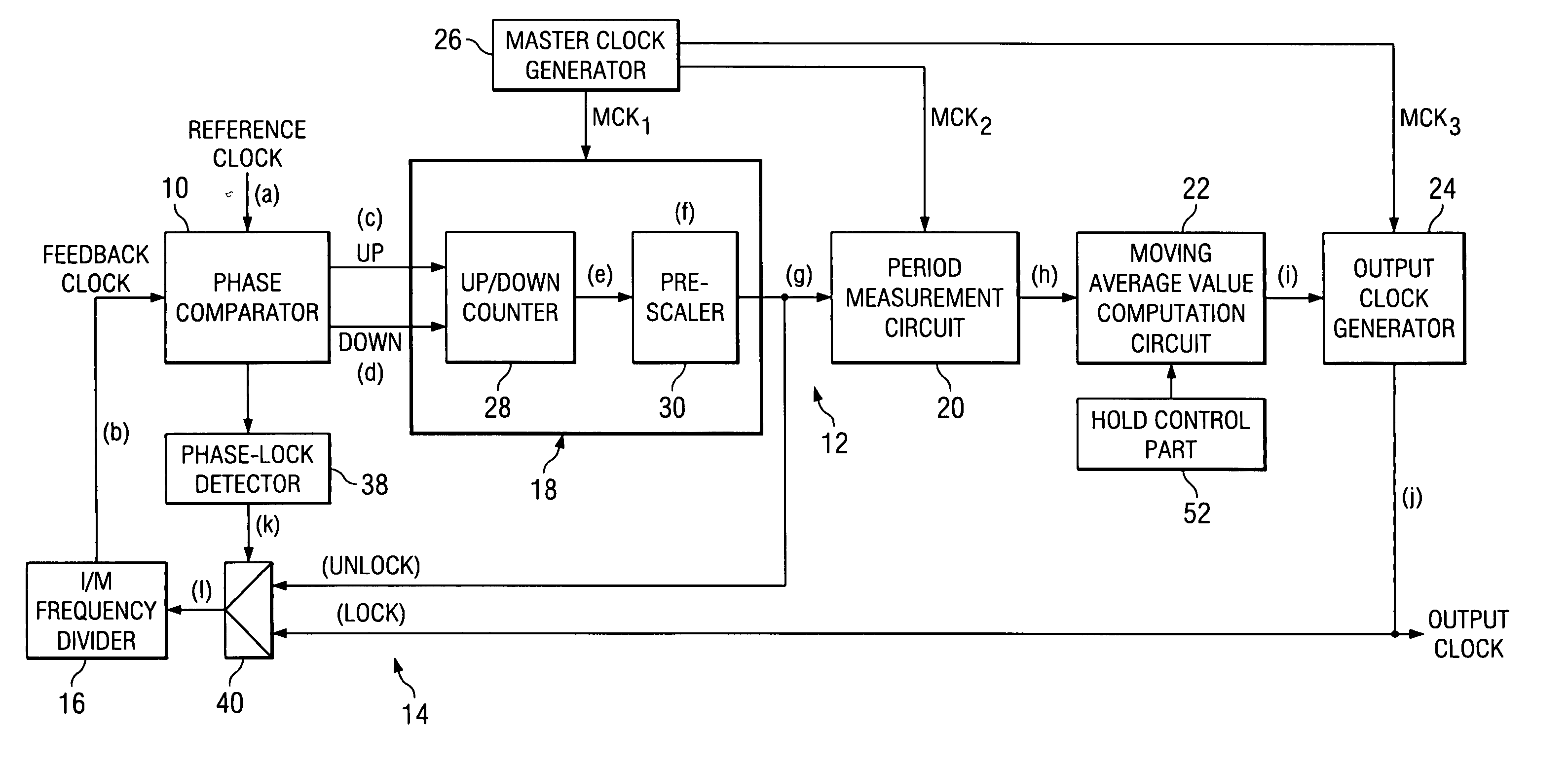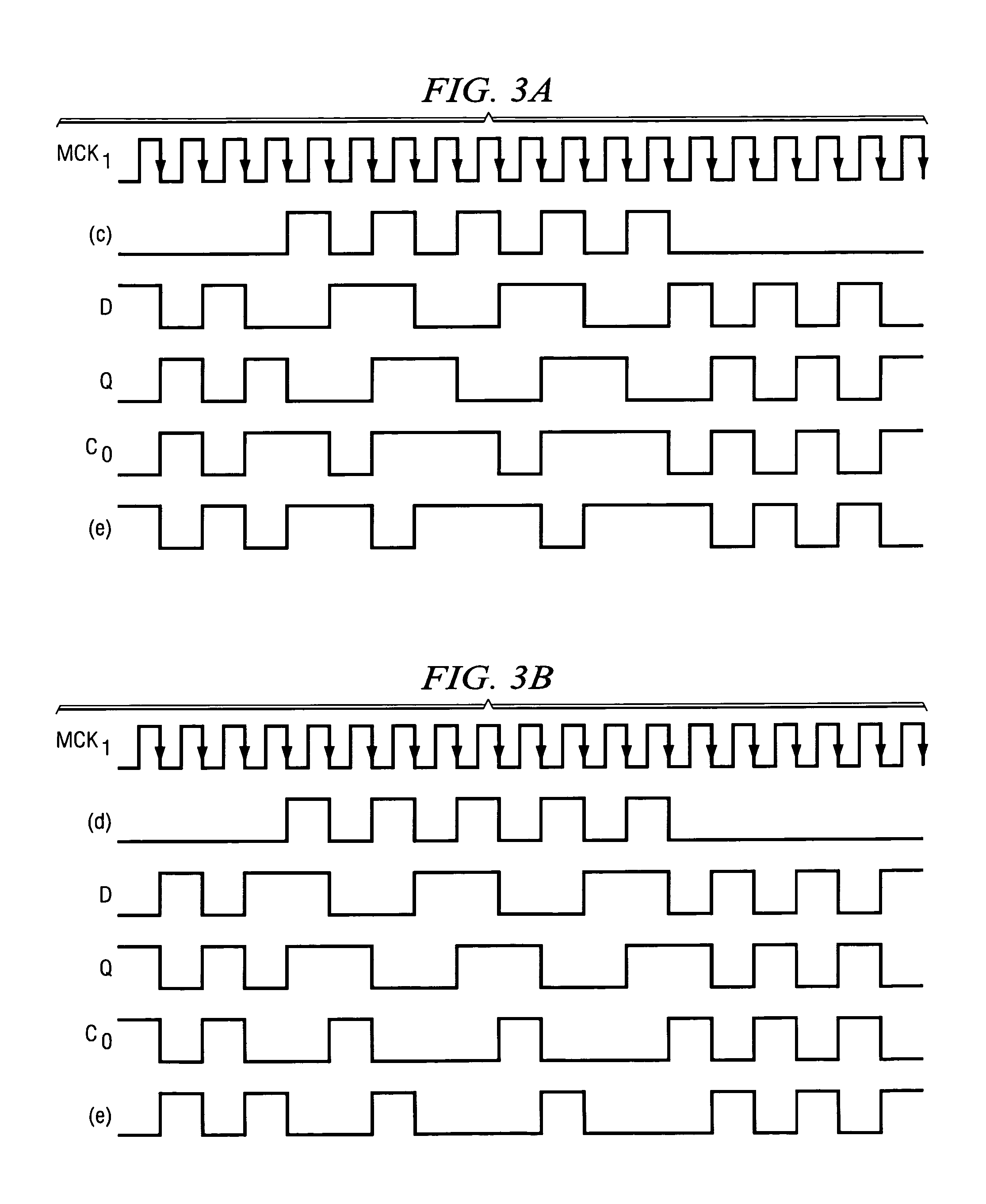Digital phase-locked loop circuit
- Summary
- Abstract
- Description
- Claims
- Application Information
AI Technical Summary
Benefits of technology
Problems solved by technology
Method used
Image
Examples
embodiment 1
[0029]FIG. 1 is a diagram illustrating the constitution of the digital phase-locked loop (DPLL) circuit in Embodiment 1 of the present invention. The DPLL circuit of this embodiment is a multiplier DPLL circuit that generates locked output clock j at a frequency M-times (where M is an integer of 2 or larger) that of input reference clock a. Generally speaking, it is has a phase-locked loop composed of phase comparator 10, control oscillation part 12 and feedback part 14.
[0030] Feedback part 14 contains frequency divider 16 that generates feedback clock b at 1 / M times the frequency division for of output clock j. Phase comparator 10 compares the phase of reference clock a and feedback clock b, and outputs digital synchronization control signals c, d corresponding to the phase difference. More specifically, from the difference in time between the edge of reference clock a and the edge of feedback clock b, the lead / lag relationship or phase difference between the two clocks is detecte...
embodiment 2
[0057]FIG. 9 is a diagram illustrating the constitution of the DPLL circuit in Embodiment 2. Part numbers used in Embodiment 1 (FIG. 1) that correspond to parts with the same constitutions and functions are used here. The most significant characteristic feature of Embodiment 2 is that phase comparator 54 and range counter 56 improve lock range.
[0058] Like phase comparator 10, phase comparator 54 compares the phase of reference clock a and feedback clock b, and corresponding to the phase difference, outputs digital synchronization control signals m, n. The phase comparator has a lower phase difference detection sensitivity than phase comparator 10, and when the phase difference between the two clocks a, b exceeds a prescribed upper limit (e.g., ⅛ of a period), corresponding to the lead / lag relationship between the two clocks, it selectively outputs either up-count enable signal m or down-count enable signal n of the square wave pulse. Here, said up-count enable signal m is output wh...
PUM
 Login to View More
Login to View More Abstract
Description
Claims
Application Information
 Login to View More
Login to View More - R&D
- Intellectual Property
- Life Sciences
- Materials
- Tech Scout
- Unparalleled Data Quality
- Higher Quality Content
- 60% Fewer Hallucinations
Browse by: Latest US Patents, China's latest patents, Technical Efficacy Thesaurus, Application Domain, Technology Topic, Popular Technical Reports.
© 2025 PatSnap. All rights reserved.Legal|Privacy policy|Modern Slavery Act Transparency Statement|Sitemap|About US| Contact US: help@patsnap.com



